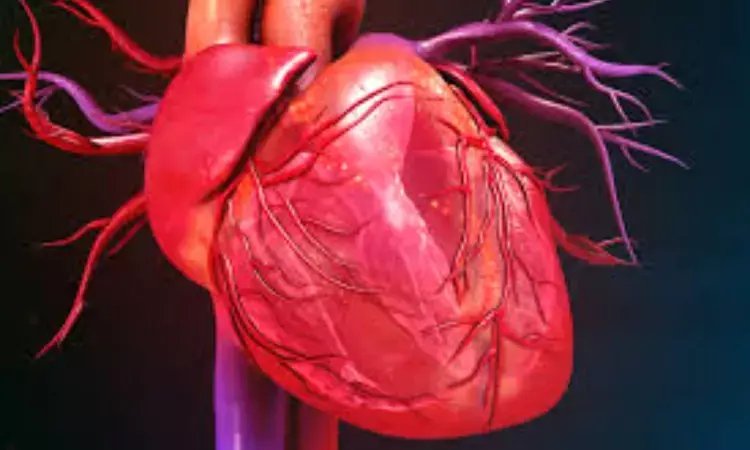- Home
- Medical news & Guidelines
- Anesthesiology
- Cardiology and CTVS
- Critical Care
- Dentistry
- Dermatology
- Diabetes and Endocrinology
- ENT
- Gastroenterology
- Medicine
- Nephrology
- Neurology
- Obstretics-Gynaecology
- Oncology
- Ophthalmology
- Orthopaedics
- Pediatrics-Neonatology
- Psychiatry
- Pulmonology
- Radiology
- Surgery
- Urology
- Laboratory Medicine
- Diet
- Nursing
- Paramedical
- Physiotherapy
- Health news
- Fact Check
- Bone Health Fact Check
- Brain Health Fact Check
- Cancer Related Fact Check
- Child Care Fact Check
- Dental and oral health fact check
- Diabetes and metabolic health fact check
- Diet and Nutrition Fact Check
- Eye and ENT Care Fact Check
- Fitness fact check
- Gut health fact check
- Heart health fact check
- Kidney health fact check
- Medical education fact check
- Men's health fact check
- Respiratory fact check
- Skin and hair care fact check
- Vaccine and Immunization fact check
- Women's health fact check
- AYUSH
- State News
- Andaman and Nicobar Islands
- Andhra Pradesh
- Arunachal Pradesh
- Assam
- Bihar
- Chandigarh
- Chattisgarh
- Dadra and Nagar Haveli
- Daman and Diu
- Delhi
- Goa
- Gujarat
- Haryana
- Himachal Pradesh
- Jammu & Kashmir
- Jharkhand
- Karnataka
- Kerala
- Ladakh
- Lakshadweep
- Madhya Pradesh
- Maharashtra
- Manipur
- Meghalaya
- Mizoram
- Nagaland
- Odisha
- Puducherry
- Punjab
- Rajasthan
- Sikkim
- Tamil Nadu
- Telangana
- Tripura
- Uttar Pradesh
- Uttrakhand
- West Bengal
- Medical Education
- Industry
Patients With Achilles Tendon Rupture at increased risk of Ventricular Arrhythmia

A recent study published in Journal Of Clinical Medicine sheds light on a potential association between acute spontaneous Achilles tendon ruptures (ATRs) and ventricular repolarization disturbances, which may increase the risk of ventricular arrhythmia. The findings highlight the importance of closely monitoring patients with ATRs for potential cardiac complications.
The study was conducted by Volkan Gur and team between June 2014 and July 2020, involved a total of 29 patients who presented to the emergency department within the first three weeks of injury. These patients were diagnosed with acute spontaneous ATRs and underwent treatment using an open Krackow suture technique. A control group of 52 healthy individuals was recruited from the cardiology outpatient clinic for comparison.
Clinical data, including demographic features and laboratory parameters, were collected from medical records. Additionally, electrocardiograms (ECGs) were analyzed to evaluate various ventricular repolarization parameters, such as QRS width, QTc interval, cQTd interval, Tp-e interval, and Tp-e/QT ratio. The aim was to identify any significant differences between the ATR group and the control group.
The findings of the study were:
● The results showed that while there were no significant differences in clinical data between the two groups, several ECG parameters exhibited notable variations.
● Heart rate, QRS width, QTc interval, and cQTd interval were found to be similar in both groups.
● Two crucial findings emerged from the study: the mean Tp-e interval was longer in the ATR group (72.4 ± 24.7) compared to the control group (58.8 ± 14.5), and the Tp-e/QT ratio was higher in the ATR group (0.2 ± 0.1) compared to the control group (0.16 ± 0.4).
● These ventricular repolarization disturbances indicate a potential heightened risk of ventricular arrhythmia among patients with ATRs.
● Therefore, it is crucial for individuals who have experienced ATRs to be evaluated for ventricular arrhythmia risk by a qualified cardiologist.
While further research is needed to establish a definitive causal relationship, this study serves as an important stepping stone towards understanding the cardiac risks associatedwith ATRs. The medical community can now be more vigilant in assessing and monitoring patients with ATRs for potential ventricular arrhythmias, ensuring their overall well-being and safety.
The study has uncovered a significant association between acute spontaneous Achilles tendon ruptures (ATRs) and disturbances in the ventricular repolarization rhythm. The findings indicate that individuals with ATRs may face a higher risk of developing ventricular arrhythmia. As a result, it is crucial for patients with ATRs to undergo thorough assessments conducted by expert cardiologists to evaluate their propensity for ventricular arrhythmias.
Reference:
Gür, V., Yapici, F., Küçük, U., Subaşi, İ. Ö., Gökgöz, M. B., Karaköse, R., & Koçkara, N. (2023). Patients with Achilles tendon rupture are prone to develop ventricular arrhythmia. Journal of Clinical Medicine, 12(10). https://doi.org/10.3390/jcm12103583.
Dr Kamal Kant Kohli-MBBS, DTCD- a chest specialist with more than 30 years of practice and a flair for writing clinical articles, Dr Kamal Kant Kohli joined Medical Dialogues as a Chief Editor of Medical News. Besides writing articles, as an editor, he proofreads and verifies all the medical content published on Medical Dialogues including those coming from journals, studies,medical conferences,guidelines etc. Email: drkohli@medicaldialogues.in. Contact no. 011-43720751


